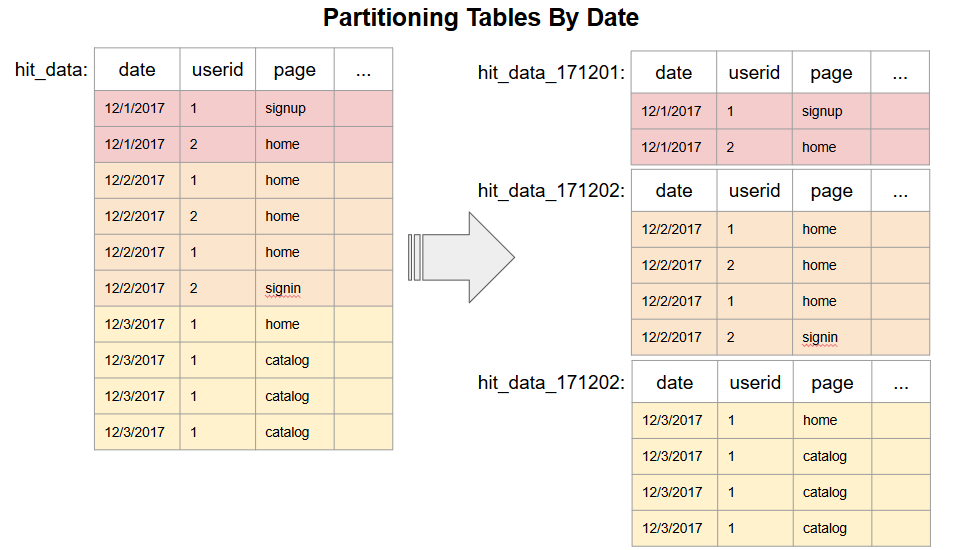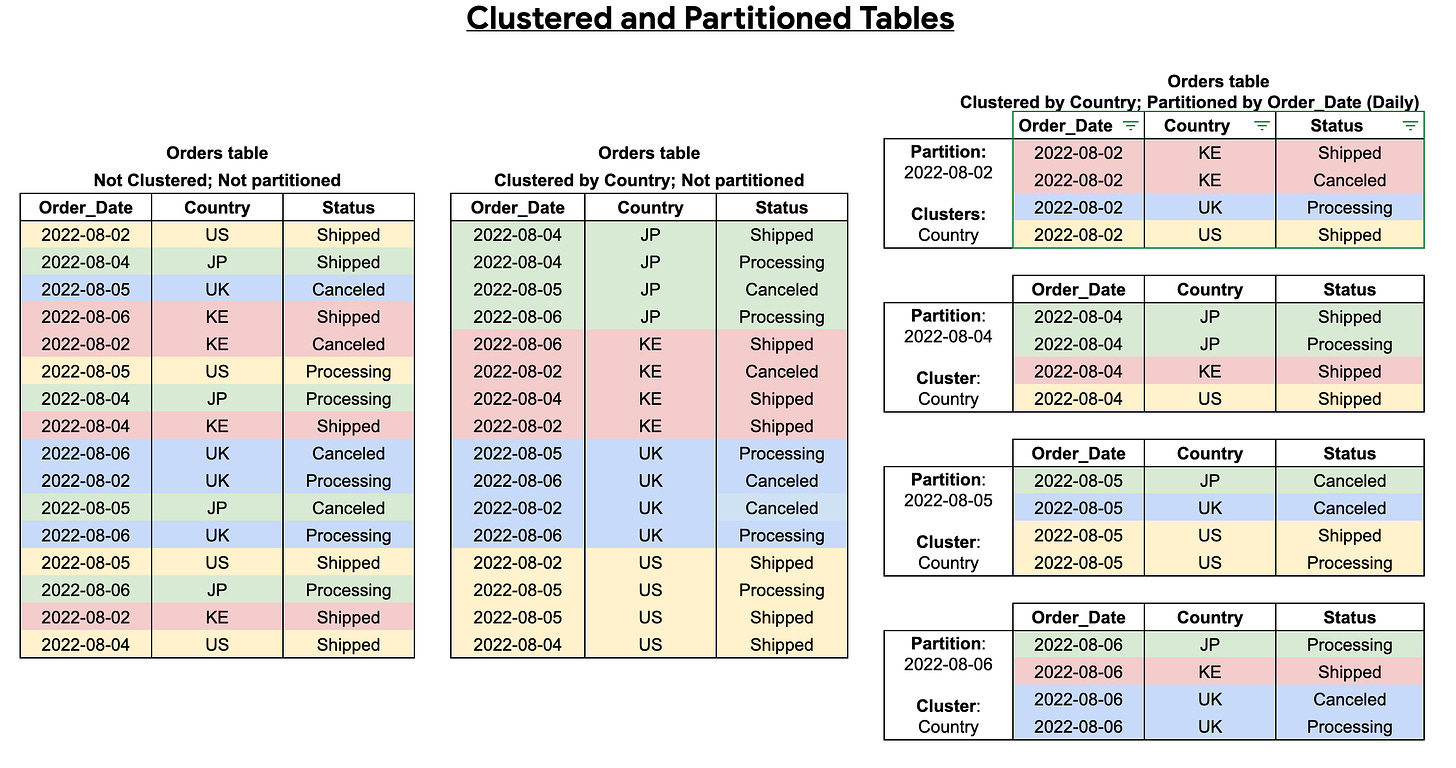Clustering and Partitioning in SQL BigQuery
Optimizing Query Performance and Reducing Costs in SQL
Partitioning and clustering are powerful techniques in Google BigQuery that help optimize query performance and reduce costs.
1. Partitioning
Partitioning is the process of dividing a large table into smaller, more manageable pieces called partitions. Each partition contains a subset of the data
Reducing Cost: Partitioning reduces the cost of bytes processed by improving the efficiency of data retrieval.
Use Case: Partitioning is particularly useful for large datasets where queries often filter on specific date ranges such as a partition by day in the example below :
2. Clustering
Clustering is the process of organising data within a table based on the values of one or more columns.
Reducing Cost: Clustering reduces the cost of bytes processed by improving the efficiency of data retrieval.
Use Case: Clustering is beneficial when queries frequently filter or aggregate data based on specific columns such as Country in the example below:
Query example to create a partitioned and clustered table in BigQuery:
CREATE TABLE Orders
PARTITION BY DATE(Order_date)
CLUSTER BY Country AS
SELECT Order_date, Country, Status FROM example_table;



